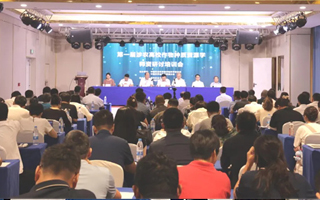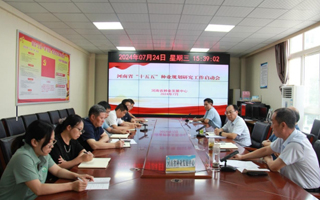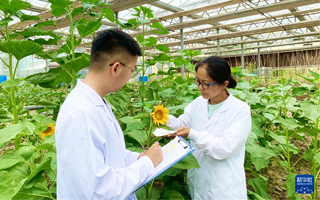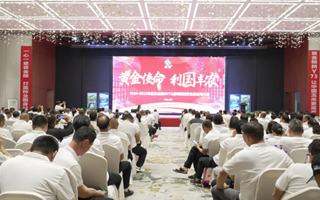来自中科院遗传与发育生物学研究所、国家杂交水稻工程技术研究中心等处的研究人员发现了一个可以提高水稻产量的新基因,其有望将其应用于培育新的水稻品种。这一研究成果发布在2月4日的《美国科学院院刊》(PNAS)杂志上。
中科院遗传与发育生物学研究所的李传友(Chuanyou Li)研究员和国家杂交水稻工程技术研究中心袁隆平(Longping Yuan)院士共同领导了这一研究。
水稻(Oryza sativa L.)是最重要粮食作物之一,也是世界1/2以上人口的主食。粒重、穗数和每穗粒数是决定水稻产量的三大要素。其中每穗粒数高度变化,对粮食产量有极大的影响。在幼穗发育期,花序分生组织是粒数的一个重要决定因素。近期,大量水稻研究揭示,分生组织活性降低可导致圆锥花序分支减少,粮食产量减低。相比之下,几种数量性状基因座(QTLs)对分生组织活力、圆锥花序分支和谷物产量均起促进作用。因此,生殖分生组织的大小和活力是决定水稻粮食产量的一个重要的决定参数。
植物激素细胞分裂素(cytokinin ,CK)是已知控制顶端分生组织(SAM)活力的重要因子。以往的研究揭示在可提高粒数的水稻Gn1a (Grain number 1a)基因座中,包含着突变的OsCKX2基因。OsCKX2基因可编码一种CK氧化/脱氢酶(CKX),催化活性CKs降解。OsCKX2表达减少,可导致花序分生组织CK累积,提高生殖器官数量,提高产量。OsCKX2突变等位基因已成功用于水稻育种实践,提高种子产量。
在这篇文章中研究人员报告称,发现锌指转录因子DST可直接调控生殖分生组织中的OsCKX2表达。DST引导OsCKX2表达调控了顶端分生组织中的CK累积,由此控制了生殖器官的数量。研究人员确定了DST的一个半显性等位基因DSTreg1,可以扰乱生殖顶端分生组织中DST引导的OsCKX2表达调控,提高CK水平,导致分生组织活力增高,促进圆锥花序分枝,由此提高粒数。
新研究揭示了生殖分生组织活力的一个独特的调控子,并确定了一个可对水稻粒数产生巨大影响的等位基因DSTreg1。这些研究发现对于培育新的优良品种,大大提高水稻产量具有重要的意义。
原文摘要:
Rice zinc finger protein DST enhances grain production through controlling Gn1a/OsCKX2 expression
The phytohormone cytokinin (CK) positively regulates the activity and function of the shoot apical meristem (SAM), which is a major parameter determining seed production. The rice (Oryza sativa L.) Gn1a/OsCKX2 (Grain number 1a/Cytokinin oxidase 2) gene, which encodes a cytokinin oxidase, has been identified as a major quantitative trait locus contributing to grain number improvement in rice breeding practice. However, the molecular mechanism of how the expression of OsCKX2 is regulated in planta remains elusive. Here, we report that the zinc finger transcription factor DROUGHT AND SALT TOLERANCE (DST) directly regulates OsCKX2 expression in the reproductive meristem. DST-directed expression of OsCKX2 regulates CK accumulation in the SAM and, therefore, controls the number of the reproductive organs. We identify that DSTreg1, a semidominant allele of the DST gene, perturbs DST-directed regulation of OsCKX2 expression and elevates CK levels in the reproductive SAM, leading to increased meristem activity, enhanced panicle branching, and a consequent increase of grain number. Importantly, the DSTreg1 allele provides an approach to pyramid the Gn1a-dependent and Gn1a-independent effects on grain production. Our study reveals that, as a unique regulator of reproductive meristem activity, DST may be explored to facilitate the genetic enhancement of grain production in rice and other small grain cereals.













